
Roots
There exists a whisper, a silent hum carried through generations, dwelling in the very fiber of textured strands. It speaks of ancestral hands, of sun-drenched landscapes, and of a gift from the earth itself ❉ shea butter. This golden balm, born from the nuts of the sacred African shea tree, the Vitellaria paradoxa, holds within its fatty embrace stories of resilience, care, and an unbroken lineage of hair wisdom. It is a testament to ingenuity, a physical manifestation of heritage passed down through time.
For those with coils, kinks, and waves, understanding its historical application is not an academic exercise; it connects us to a profound legacy of self-care and communal expression. The shea tree, often reverently called the “tree of life” in communities spanning Ghana, Nigeria, Mali, and Burkina Faso, has sustained people for centuries, offering its bounty for culinary, medicinal, and profoundly, cosmetic purposes.
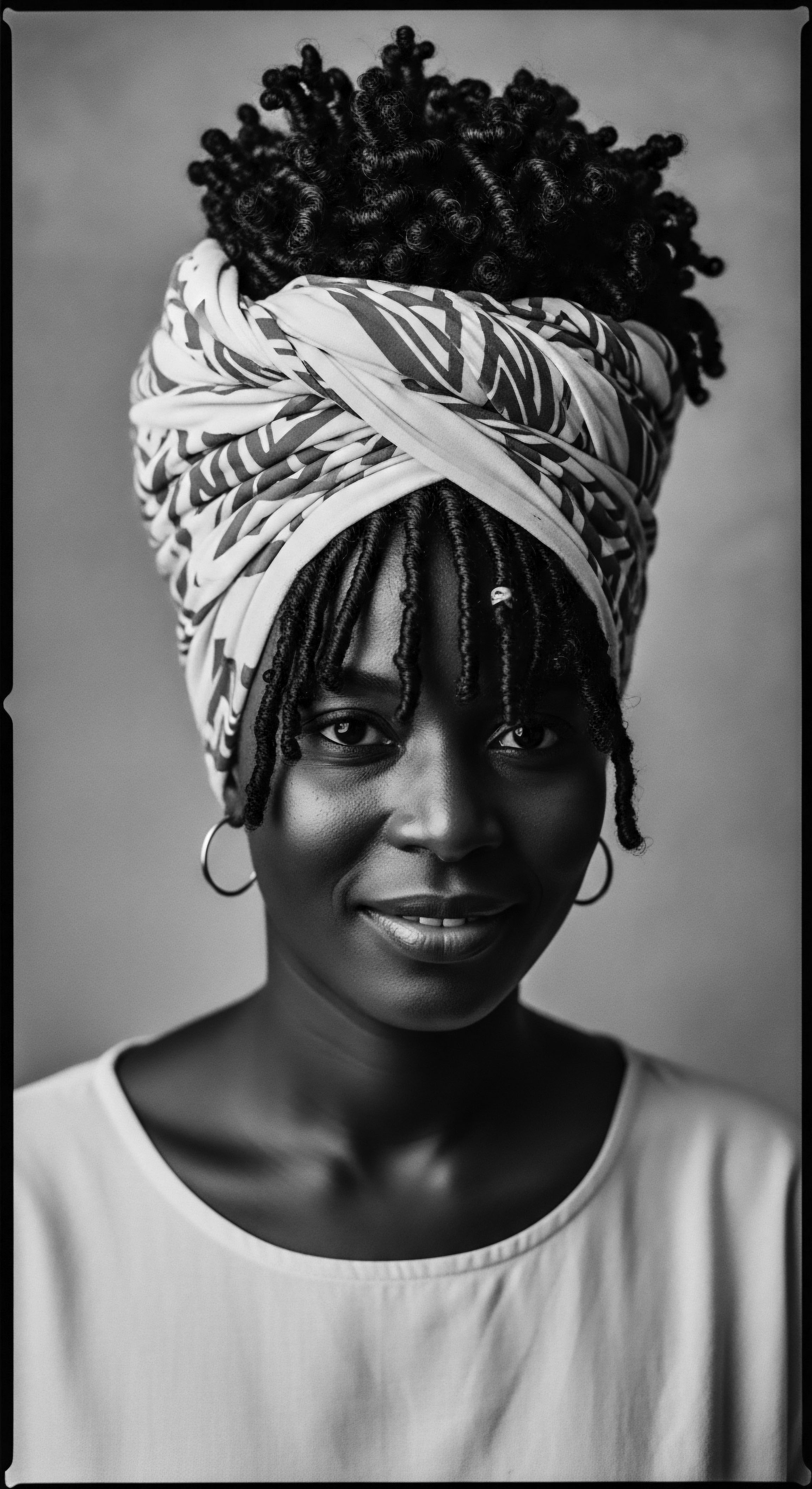
The Tree of Life and Its Ancient Offering
The journey of shea butter into the realm of textured hair care began millennia ago, long before scientific laboratories began to dissect its molecular structure. Its roots trace to the vast shea belt of West Africa, a region where the wild-growing trees have offered their nutrient-rich nuts to local communities for countless generations. Women, the primary cultivators and processors, developed a sophisticated, communal method of extraction, a labor-intensive ritual involving harvesting the fallen fruit, crushing the nuts, roasting them, and then meticulously kneading the resulting paste to separate the precious butter. This traditional process, often passed from mother to daughter, preserves the raw vitality of the butter, distinguishing it from industrially refined versions.
Early ethnographic accounts and archaeological findings illuminate the deep antiquity of this practice. Research led by anthropologist Daphne Gallagher, for instance, revealed carbonized fragments of shea nutshells at an archaeological site in Kirikongo, Burkina Faso, indicating that local residents have been processing these nuts since at least A.D. 100. This pushes the known history of shea use back by a thousand years from previous assumptions, solidifying its place as a foundational element in West African life and, by extension, traditional beauty practices.
(Gallagher, 2016). This extended timeline affirms the butter’s ingrained cultural status, a presence woven into daily life, ceremonial acts, and hair care routines.
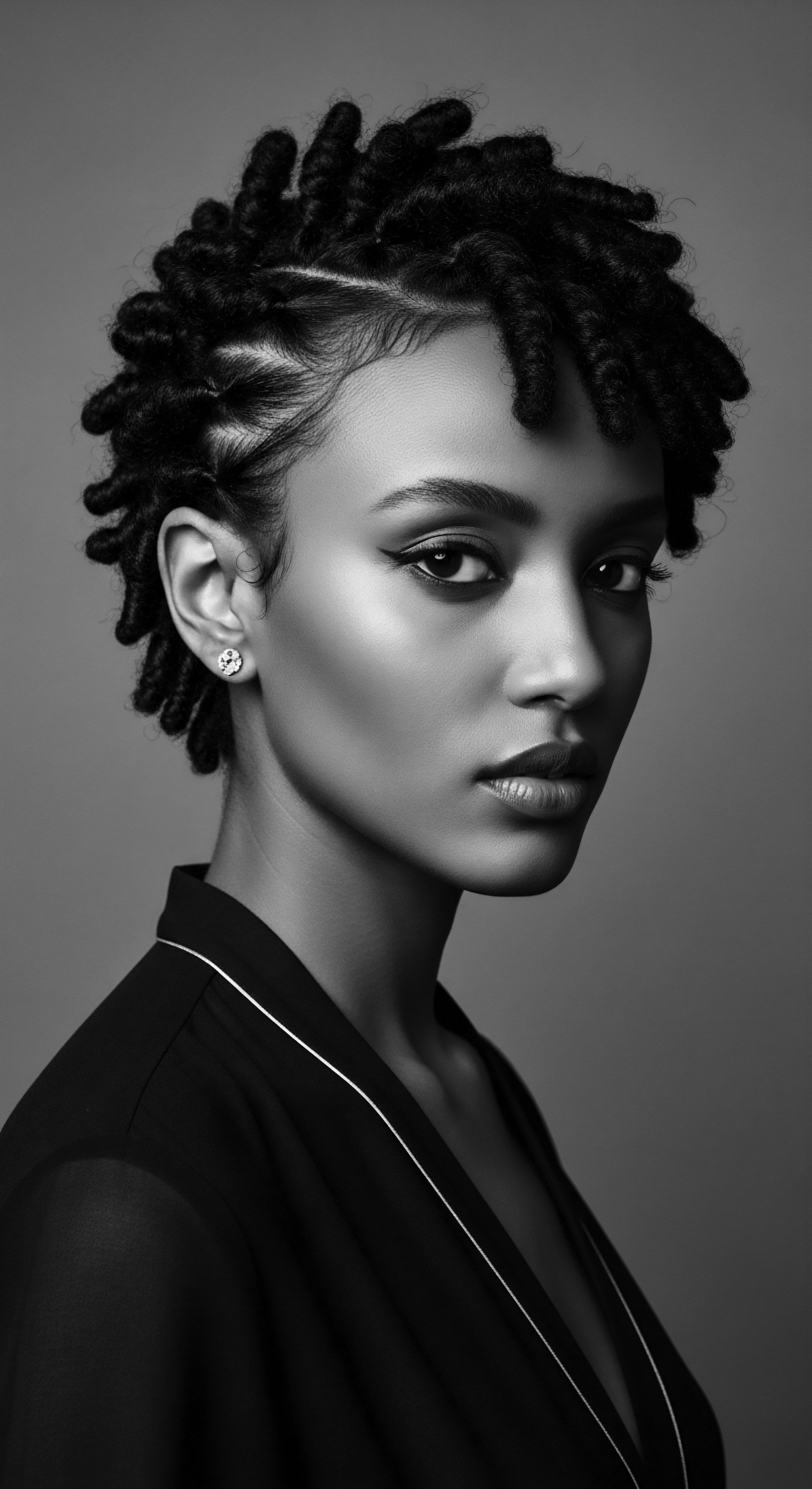
Anatomy’s Echoes and Shea’s Embrace
Textured hair, with its unique helical structure, presents particular needs, concerns rooted in its biological architecture. The cuticle layer, the outermost protective sheath of the hair strand, often lifts more readily in curly and coily patterns, leading to increased moisture loss. This inherent characteristic means textured hair tends towards dryness, making emollient and sealant properties highly beneficial.
Shea butter, with its abundance of fatty acids, including oleic, stearic, and linoleic acids, along with vitamins A and E, offers a natural answer to these needs. These constituents work to create a protective coating around the hair shaft, effectively sealing in moisture and guarding against environmental stressors such as sun and wind.
The ancestral wisdom surrounding shea butter recognized its inherent ability to harmonize with the structural demands of textured hair, long before modern science articulated the mechanisms.
The ancestral lexicon of hair care, while not couched in modern scientific terms, understood this dynamic. Terms for different hair states or needs would have likely informed the application of shea butter. A hair that was “thirsty” or “brittle” would find its relief in the rich, soothing application of the butter. The understanding was intuitive, born from observation and generations of practice.
- Oleic Acid ❉ A monounsaturated fatty acid, it offers deep moisturizing properties, allowing shea butter to penetrate the hair shaft and replenish lipids.
- Stearic Acid ❉ A saturated fatty acid, it contributes to shea butter’s solid texture and helps form a protective barrier on the hair surface, minimizing moisture escape.
- Linoleic Acid ❉ An omega-6 fatty acid, it supports the hair’s lipid barrier, aiding in hydration and overall strand strength.
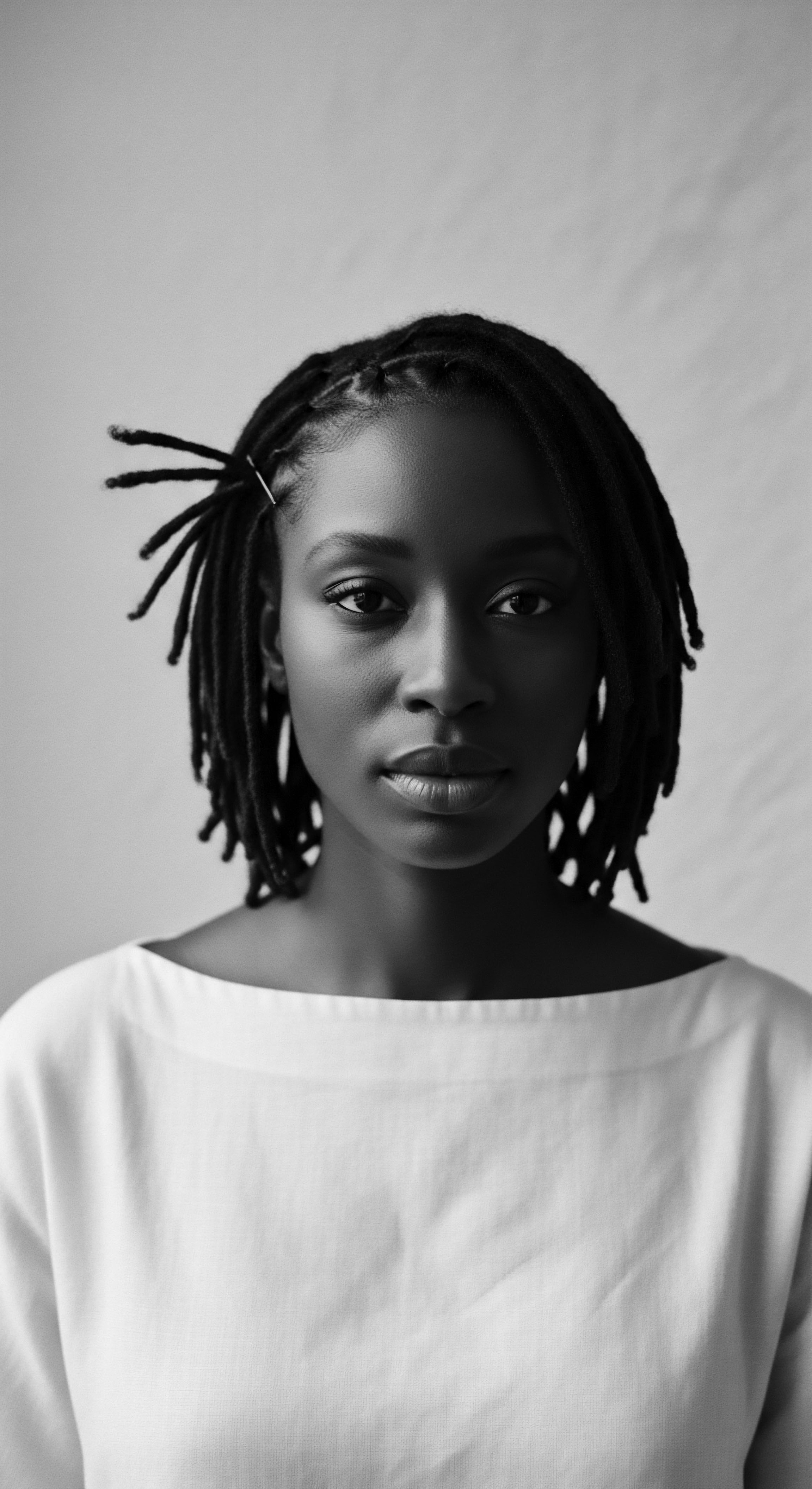
What Did Ancient Hair Systems Rely On For Coily Hair?
Ancient African hair care systems, especially for coily and kinky textures, primarily relied on natural, readily available botanical ingredients that possessed emollient, protective, and cleansing properties. These systems were deeply integrated with daily life, community, and ceremonial practices. Beyond shea butter, other plant-based oils and butters, such as palm oil and various nut oils, found common application. Clay, too, played a role in cleansing and conditioning.
The focus was on maintaining scalp health, keeping the hair moisturized, preventing breakage, and facilitating styling. The harsh environmental conditions of the Sahel, with its intense sun and drying winds, underscored the practical necessity of such rich, protective emollients like shea butter.
In many pre-colonial African societies, hair was a profound visual language, conveying information about one’s identity, social status, age, marital status, and tribal affiliation. The intricate patterns and styles often required hours, sometimes days, to create, making the hair care process a communal activity that strengthened social bonds. Shea butter provided the essential lubrication and conditioning to allow for these elaborate styles, making hair pliable and resilient, minimizing friction during braiding, twisting, and sculpting. This foundational role in daily and ceremonial hair care firmly establishes shea butter as an enduring component of textured hair heritage.
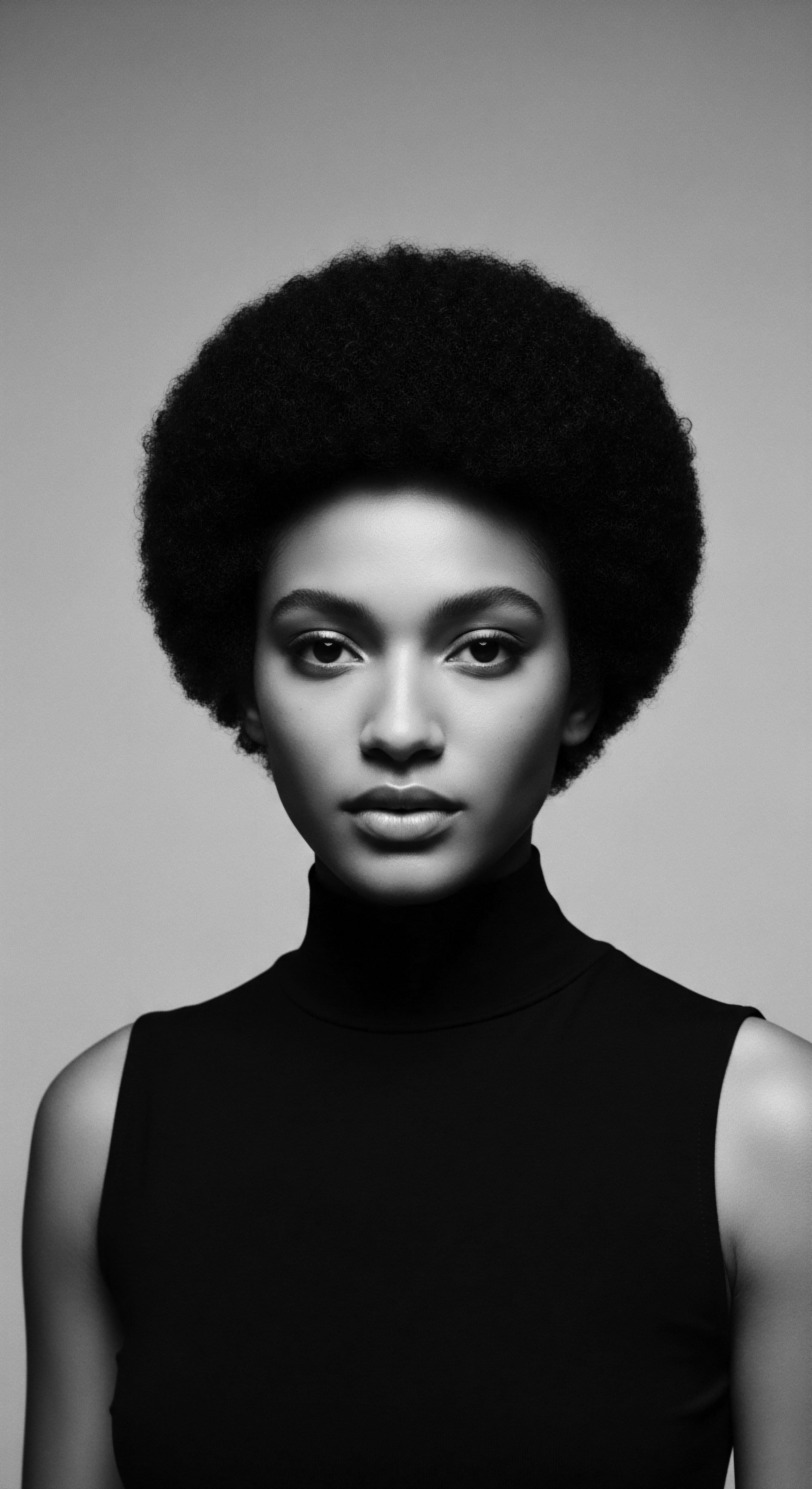
Ritual
The application of shea butter to textured hair in historical contexts transcended mere product use; it was a ritual, a tender thread connecting individuals to community, to ancestral practices, and to the living archive of their heritage. From protective styles meant to shield delicate strands from the elements to elaborate ceremonial adornments, shea butter served as an indispensable partner in the artistry of hair, a silent testament to generations of accumulated wisdom. The physical act of warming the butter between palms, its creamy texture melting into a silken oil, prepared both the hands and the spirit for the nourishing work ahead.
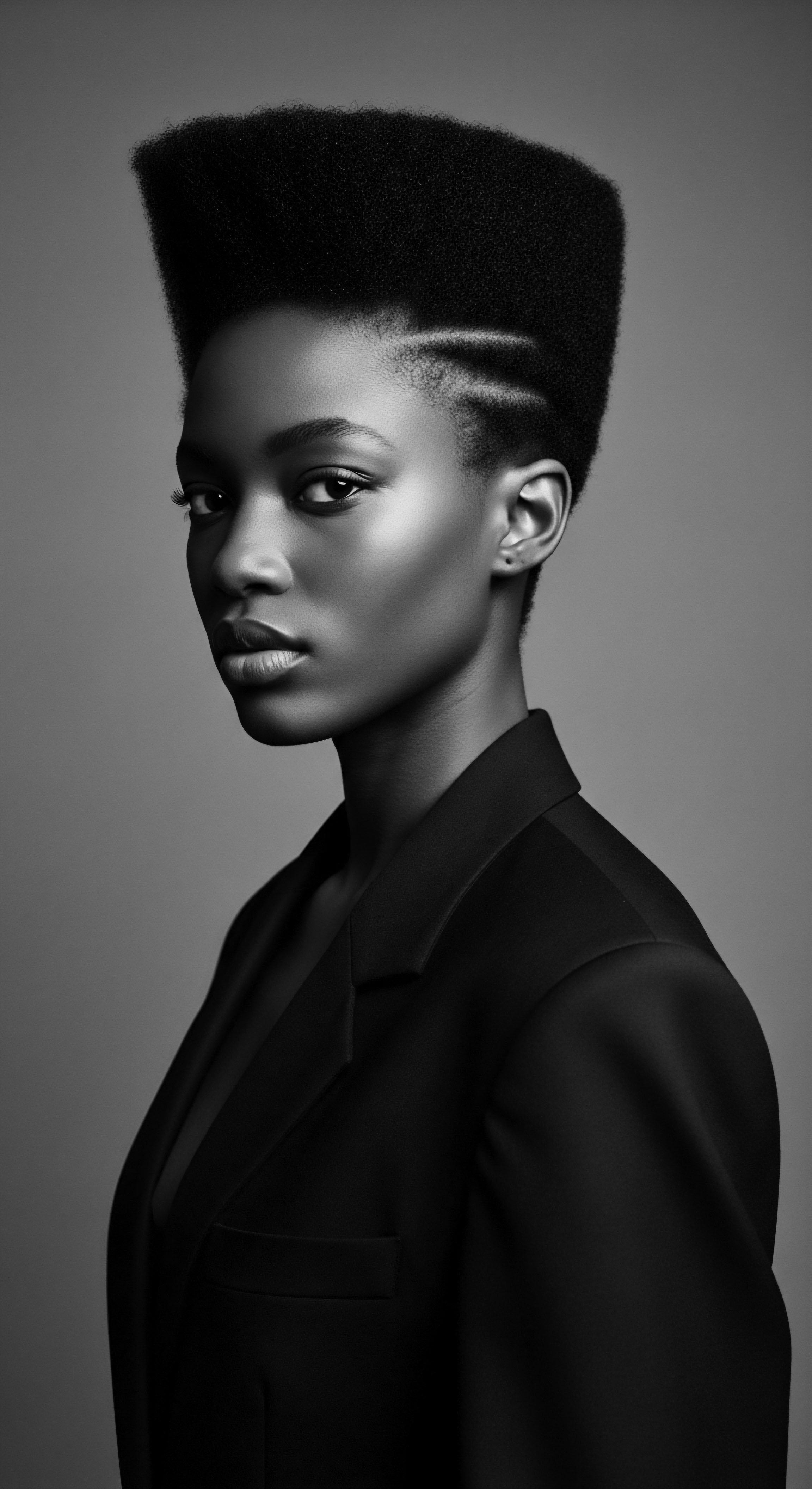
Traditional Styling and Shea’s Role
In pre-colonial West Africa, hair was a canvas for identity, a powerful non-verbal language. Complex braiding patterns, sculpted updos, and locs were common, each style carrying specific meaning, signifying social status, age, marital status, or tribal identity. Shea butter was foundational to these styling practices.
Its emollient qualities made coily hair more malleable, reducing friction and minimizing breakage during the intricate processes of sectioning, detangling with fingers or traditional combs, and braiding. Women often applied shea butter as a sealant and moisturizer before and after creating these styles, ensuring longevity and health.
One powerful example of shea butter’s historical application in styling can be seen in the practices of various communities across the Sahel, such as the Himba women of Namibia, who historically combined butterfat (though often from cattle, the principle of emollient application is shared) with ground ochre to create their distinctive otjize paste, used for both hair and skin protection and adornment. While otjize uses different fats, the widespread use of local butters and ochre for similar protective and aesthetic purposes highlights a common thread of utilizing natural, rich substances to sculpt and preserve hair in challenging environments. Similarly, women in Chad, known for their lengthy hair traditions, traditionally mix chébé powder—sourced from the local chébé plant seeds—with moisturizing substances, including shea butter, to create a paste applied to hydrated hair. This mixture is then braided into the hair to lock in hydration and provide protection, a practice passed down through generations.
The historical use of shea butter for textured hair underscores its practical and symbolic role in traditional styling, acting as both a protective balm and a medium for cultural expression.
The practice extended beyond simple application. The butter was often massaged into the scalp, a soothing act intended to alleviate dryness and promote a healthy environment for growth. This ritualistic massage was not simply about physical benefit; it often involved storytelling, sharing of wisdom, and strengthening familial bonds.
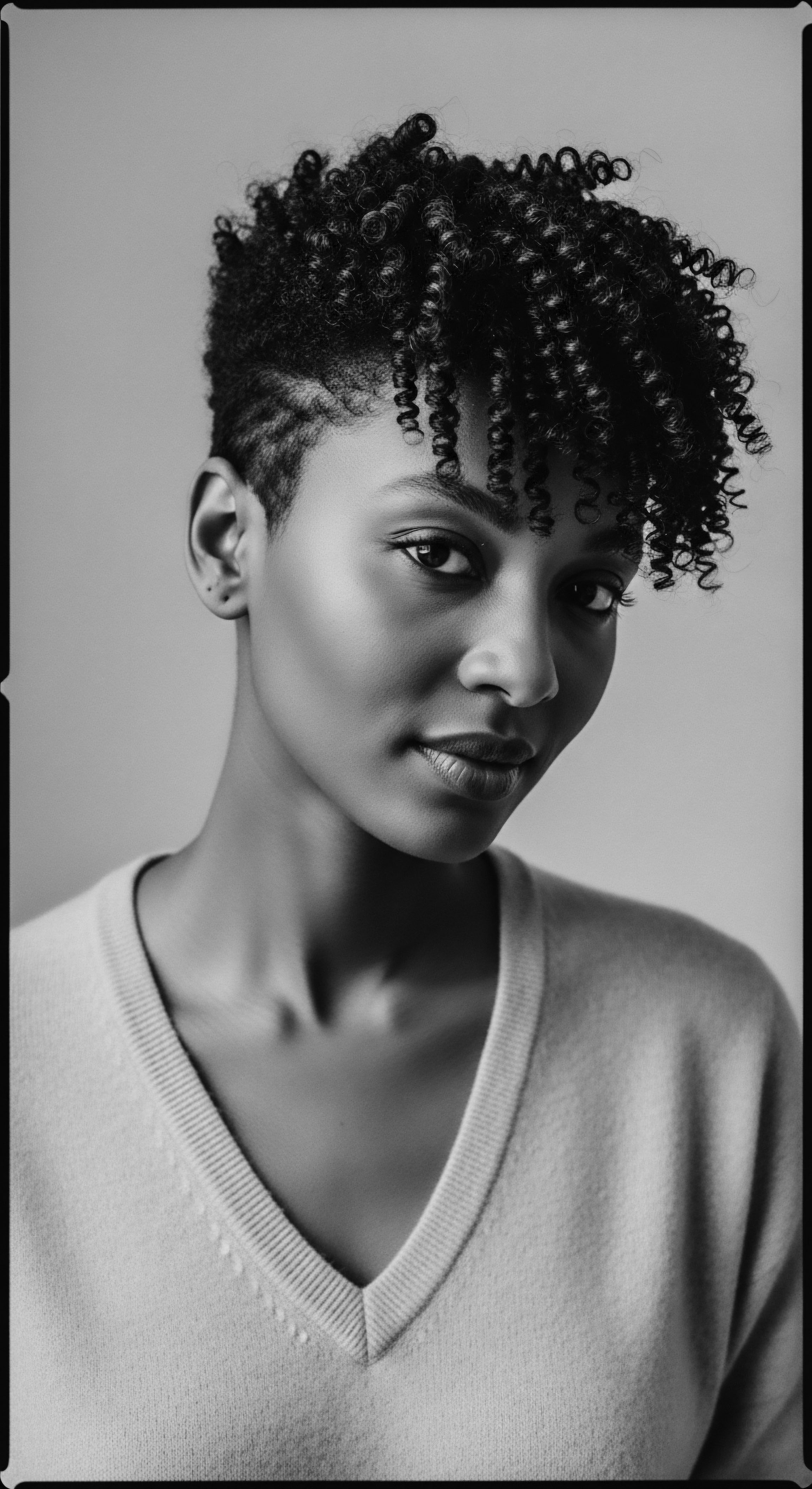
What Hair Tools Were Used With Shea Butter?
The tools accompanying shea butter in traditional hair care were as elemental and organic as the butter itself, reflecting the close relationship between people and their natural environment. Foremost among these were the hands of the caregiver or stylist, using their fingers to section, detangle, and apply the rich balm. Beyond hands, traditional combs carved from wood or bone were essential for parting and smoothing. These combs, often decorated with symbolic motifs, served not only a practical purpose but held cultural significance.
For more elaborate styles, women might use natural fibers or small sticks to help create and secure intricate patterns. The tools, much like the shea butter, were not mere implements; they were extensions of the cultural practice itself, imbued with the meaning of the ritual. The communal grooming sessions, where these tools and shea butter were shared, fostered a sense of belonging and allowed for the transmission of hair care techniques from elder to youth.
| Historical Application Preparation for intricate braiding and twisting to increase pliability. |
| Contemporary Parallel/Benefit Enhances manageability and elasticity for modern protective styles like box braids or twists. |
| Historical Application Sealing moisture into hair strands to combat arid climates and prevent sun damage. |
| Contemporary Parallel/Benefit Acts as an occlusive agent, preventing transepidermal water loss and offering mild UV protection. |
| Historical Application Soothing dry, irritated scalps through direct massage. |
| Contemporary Parallel/Benefit Anti-inflammatory properties reduce scalp irritation, flaking, and support a healthy scalp microbiome. |
| Historical Application Use as a pomade to hold sculpted styles and add natural shine. |
| Contemporary Parallel/Benefit Provides definition, reduces frizz, and imparts a natural luster without heavy residue. |
| Historical Application Integration into ceremonial hair adornments and rituals. |
| Contemporary Parallel/Benefit Connects users to ancestral practices, fostering a sense of heritage and mindful self-care. |
| Historical Application Shea butter consistently bridges historical practices with modern textured hair care, demonstrating an enduring legacy of practical and cultural value. |
The deep conditioning properties of shea butter were vital for maintaining hair integrity, particularly for styles worn for extended periods. Its ability to absorb into the hair shaft, rather than merely sit on the surface, meant that it could deliver its nourishing vitamins and fatty acids effectively. This allowed hair to remain supple, reducing friction and wear from daily activities, and protecting it from environmental aggressors. The emphasis was always on holistic well-being, where external applications like shea butter supported the overall vitality of the individual, reflecting the profound belief that outer appearance mirrored inner health and spiritual alignment.
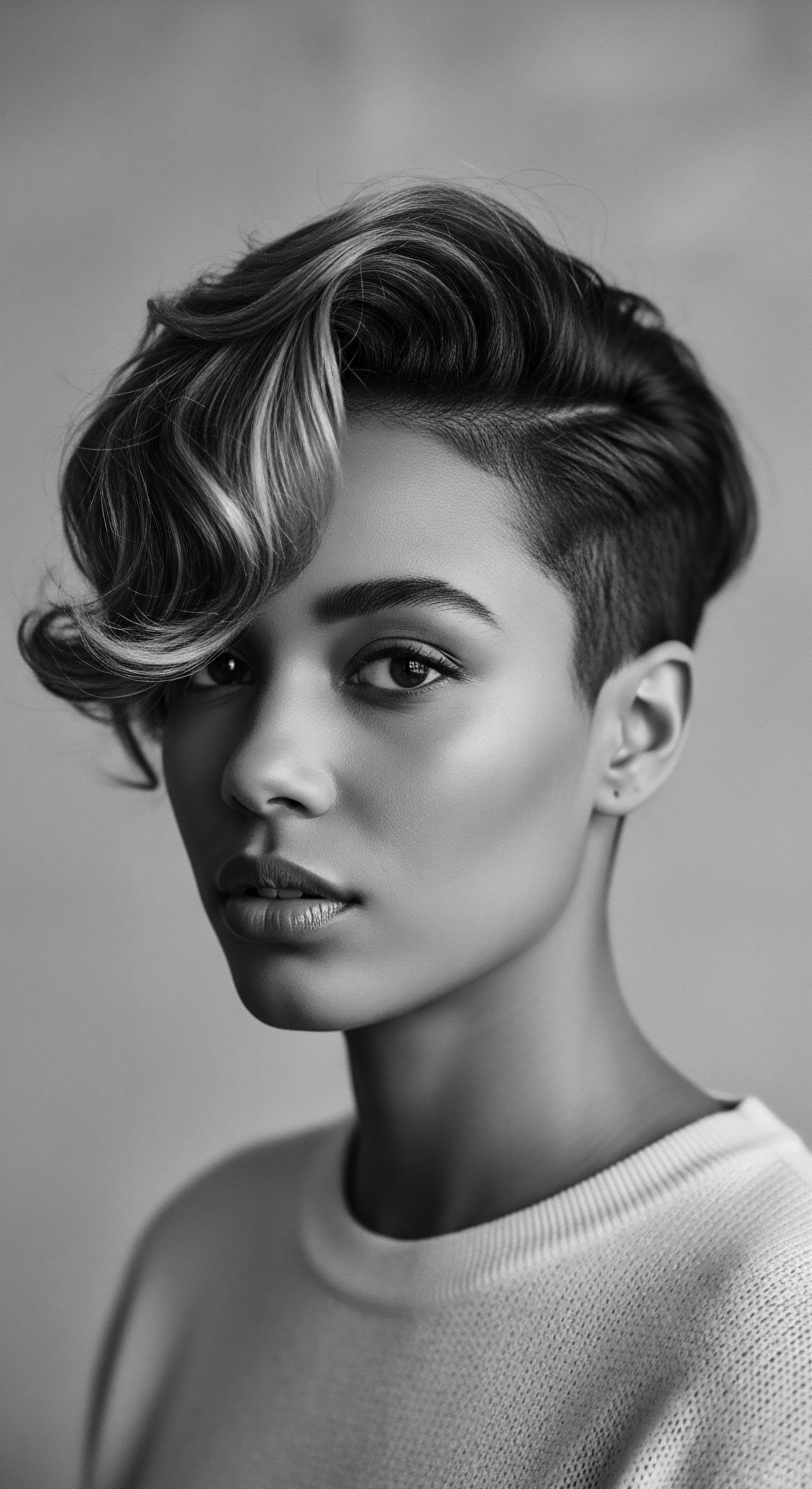
Relay
The historical understanding of shea butter’s application to textured hair was not limited to styling or occasional treatment; it was an integral component of a continuous regimen, a daily or weekly engagement with self-care rooted in ancestral wisdom. This care extended beyond waking hours, influencing nighttime rituals and offering solutions for common hair concerns, all passed along through a relay of knowledge from one generation to the next. The very act of care became a conduit for cultural continuity, a quiet rebellion against erasure.

Holistic Care and Ancestral Wellness Philosophies
Traditional African societies viewed hair care as an aspect of holistic well-being, where physical health intertwined with spiritual and communal harmony. Shea butter played a central role in this philosophy, considered not just a cosmetic ingredient, but a therapeutic balm. It was used to alleviate scalp irritation, soothe skin ailments, and protect against environmental damage, reflecting an intuitive understanding of its anti-inflammatory and restorative properties.
The consistent application of shea butter symbolized a dedication to self-preservation and vitality, honoring the body as a vessel for ancestral memory and identity. This perspective contrasts with many modern, fragmented approaches to beauty, highlighting a more integrated vision of health.
Ancestral hair care, with shea butter as its cornerstone, embodied a holistic philosophy, recognizing that scalp and strand well-being contributed to overall vitality.
For millennia, women across West Africa applied shea butter not only to their own hair but also to the hair of newborns, using it as a protective barrier and a symbol of welcome into the community. This practice reinforced the butter’s sacredness and its role in marking significant life passages. The knowledge of which plants to combine with shea butter for specific therapeutic effects – perhaps for persistent dryness or scalp conditions – was meticulously preserved within families, an oral pharmacopoeia of nature’s remedies.
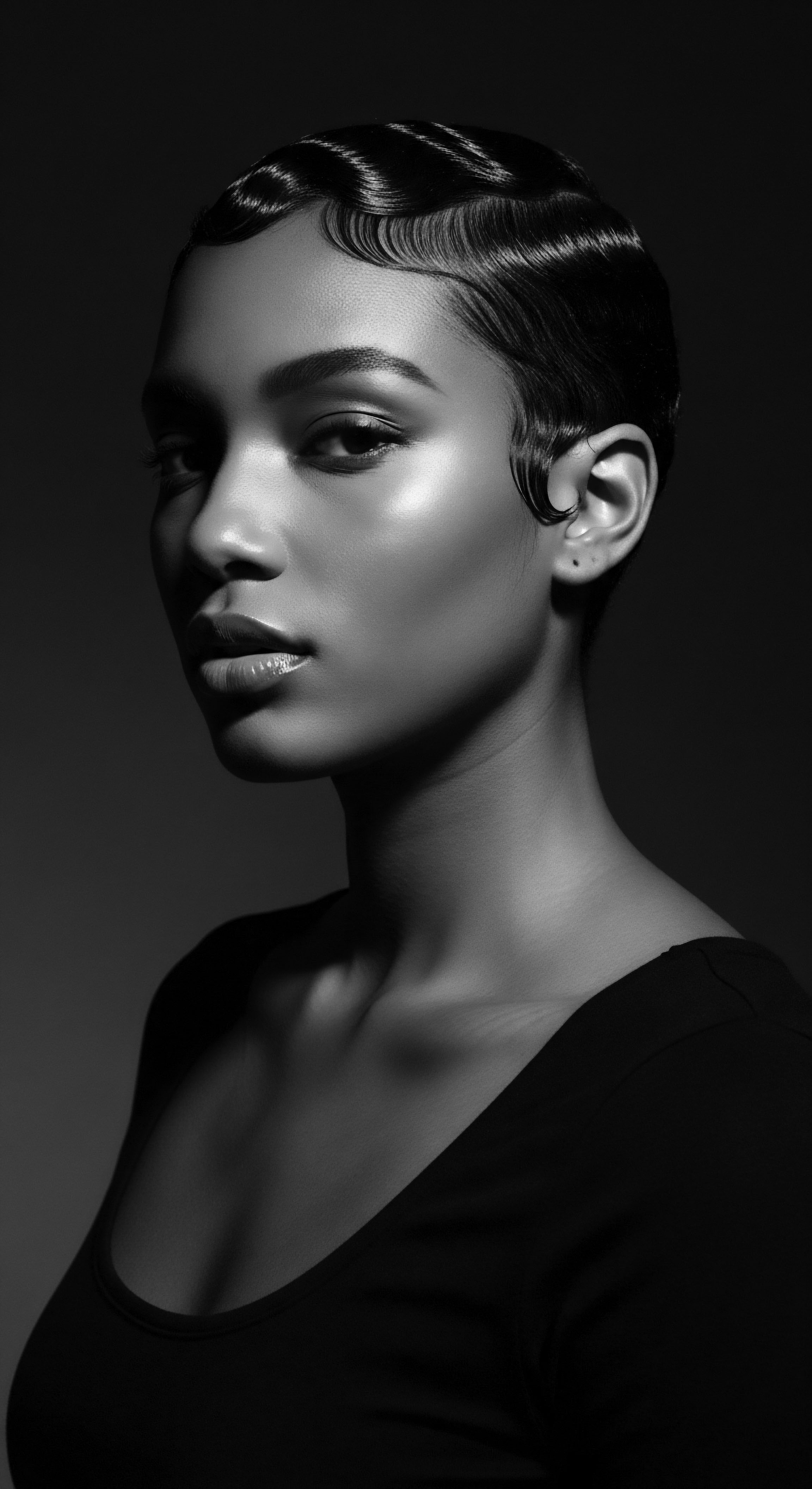
How Did Shea Butter Address Dryness And Breakage Historically?
Historically, shea butter addressed dryness and breakage in textured hair primarily through its rich emollient and occlusive properties. Its high concentration of fatty acids, notably oleic and stearic acids, allowed it to form a protective film around the hair shaft. This barrier minimized moisture evaporation from the hair, a critical function for hair types prone to dehydration due to their unique structure. By sealing in the hair’s natural oils and any applied water, shea butter effectively kept strands pliable and less susceptible to the environmental stressors that can lead to dryness and subsequent breakage.
Beyond moisture retention, the butter’s natural vitamins, such as A and E, provided conditioning and supported overall hair health. This protective action reduced friction between strands and against clothing, thereby preventing mechanical damage and breakage. Its use as a regular dressing, particularly for hair styled into protective forms, meant constant conditioning, helping to maintain the integrity of the hair over extended periods.
The importance of nighttime care, a practice deeply embedded in textured hair routines today, has historical precedent, with shea butter playing a silent yet significant role. Before the advent of modern bonnets and silk scarves, communities used natural wraps made from cotton or other available fabrics to protect hair while sleeping. Shea butter would often be applied as a last step in the evening routine, providing a nourishing layer that conditioned the hair overnight and minimized tangling or dryness that could result from friction with sleeping surfaces. This foresight in protecting hair during sleep speaks to a long-standing understanding of textured hair’s vulnerability and the need for continuous care.
- Scalp Health ❉ Shea butter, known for its anti-inflammatory properties, was massaged into the scalp to soothe irritation and combat dryness, creating a healthy foundation for hair growth.
- Moisture Retention ❉ Applied to damp hair, it acted as a sealant, locking in precious water and natural oils, thus mitigating the common challenge of moisture loss in textured hair.
- Protective Layer ❉ Its rich composition formed a protective shield against the sun and wind, guarding the delicate strands from environmental damage and reducing breakage.
The continuity of traditional care rituals, rooted in the understanding of ingredients like shea butter, speaks to an adaptive and resilient heritage. These practices, though sometimes evolving in form or context, continue to resonate with the inherent needs of textured hair, reaffirming the enduring wisdom passed from ancestors. The effectiveness witnessed for centuries validates the empiricism of traditional methods, which modern science now often illuminates with molecular precision.
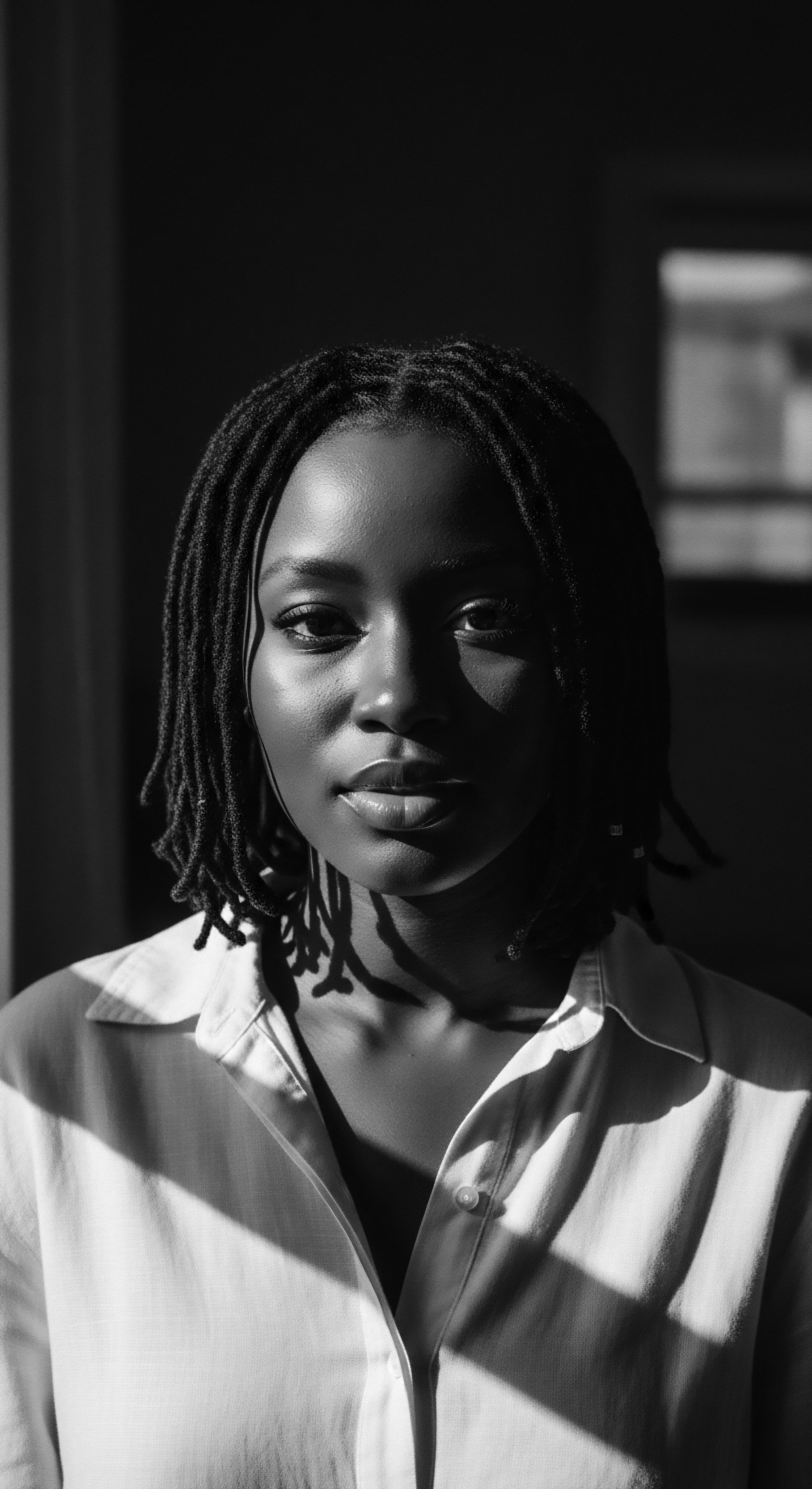
Relay
The journey of shea butter, from the communal processing in West African villages to its enduring place in global hair care, forms a living relay of knowledge, sustained by generations who understood its profound capabilities for textured hair. This historical lineage is not merely a collection of past practices; it is a dynamic, evolving understanding that connects ancient wisdom with contemporary scientific insight, deepening our appreciation for this golden gift of the karité tree. Analyzing the complexities of shea butter’s role reveals an interplay of botanical chemistry, cultural continuity, and profound human connection.
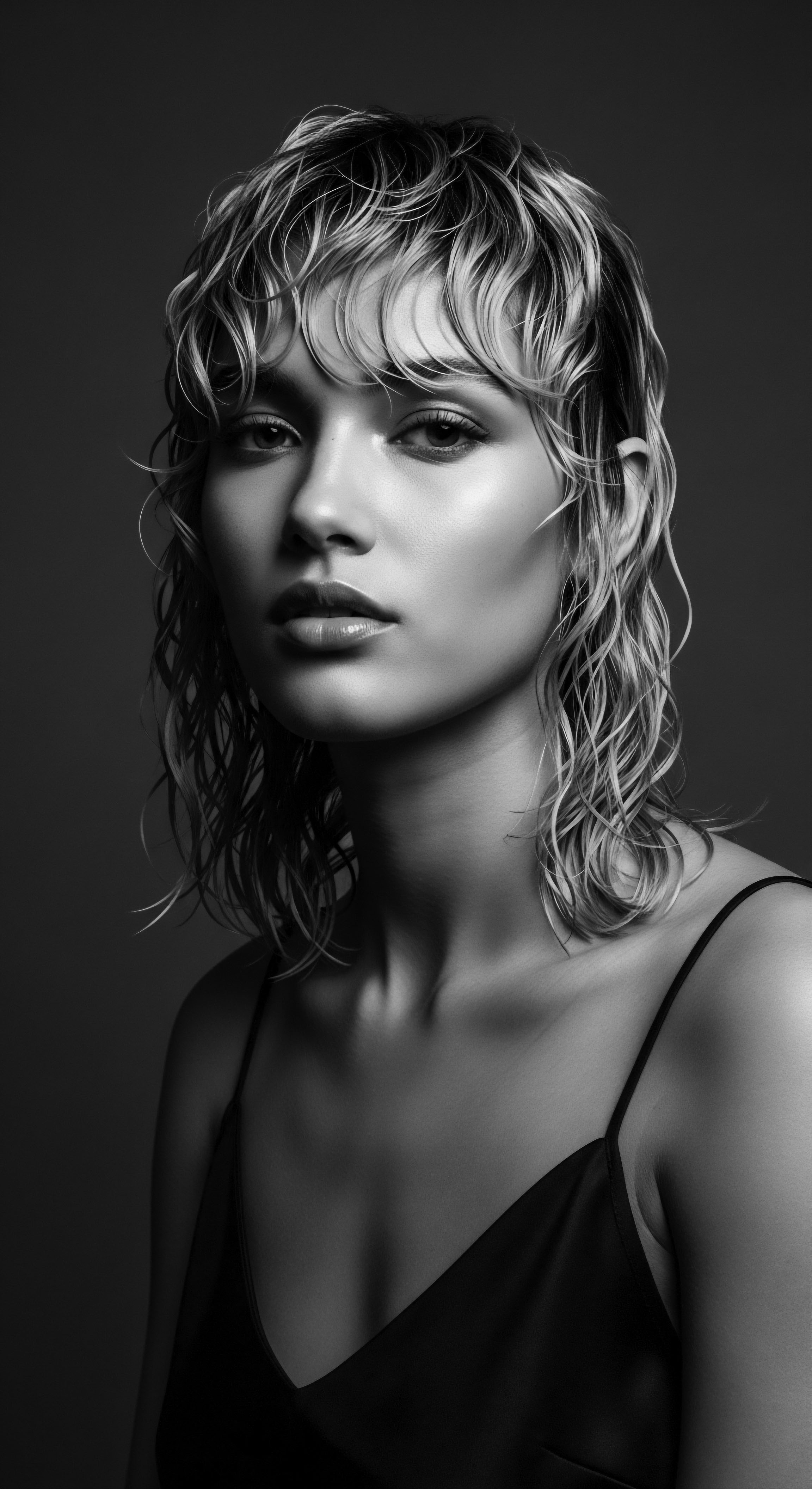
Analyzing Shea’s Molecular Structure and Historical Efficacy
Modern science, through its lens, validates much of the historical efficacy observed in the use of shea butter for textured hair. Its rich lipid profile, primarily composed of oleic acid (40-60%), stearic acid (20-50%), linoleic acid (3-11%), and palmitic acid (2-9%), explains its exceptional moisturizing and emollient properties. These fatty acids are crucial for conditioning hair and scalp, providing a protective barrier that reduces moisture loss, a persistent challenge for the highly porous nature of many textured hair types. The unsaponifiable matter in shea butter—comprising a significant portion compared to other seed oils—contains beneficial compounds like triterpenes, tocopherols (Vitamin E), phenols, and sterols.
These compounds contribute to its anti-inflammatory, antioxidant, and healing attributes, which historically would have been observed as its soothing effect on irritated scalps and its ability to promote overall scalp health. (Diop) This deep nutritional content explains why it was a staple for revitalizing dry, brittle strands and maintaining hair integrity in demanding climates. The historical practice of massaging shea butter into the scalp, for instance, aligns with modern understanding of how these beneficial compounds can be absorbed to reduce inflammation and foster a healthy environment for hair follicles.
| Key Compound Oleic Acid |
| Scientific Action Deeply moisturizing, penetrates hair shaft. |
| Historical Observation/Use Alleviated dryness, softened hair, made it pliable for styling. |
| Key Compound Stearic Acid |
| Scientific Action Barrier formation, sealing moisture. |
| Historical Observation/Use Protected hair from elements, reduced moisture loss, kept styles lasting. |
| Key Compound Vitamin A & E (Tocopherols) |
| Scientific Action Antioxidant, nourishing, cell regeneration support. |
| Historical Observation/Use Promoted overall hair vitality, soothed scalp, seen as restorative. |
| Key Compound Cinnamic Acid Esters |
| Scientific Action Mild UV absorption. |
| Historical Observation/Use Offered natural sun protection, especially in hot, sunny climates. |
| Key Compound Triterpenes |
| Scientific Action Anti-inflammatory. |
| Historical Observation/Use Reduced scalp irritation, calmed itchiness. |
| Key Compound The chemical richness of shea butter provided ancestral communities with observable benefits that modern science now precisely defines. |

What Can Shea Butter Teach Us About Hair Traditions?
Shea butter, through its enduring presence in hair care traditions, teaches us the profound value of empiricism and deep observation within ancestral communities. It reveals that sophisticated solutions to complex problems, such as maintaining the health and beauty of textured hair in varying climates, emerged not from laboratories but from generations of lived experience and meticulous refinement of natural resources. The consistent efficacy of shea butter, passed down orally and through practice, serves as a powerful validation of indigenous knowledge systems. It underscores that traditional hair care was a holistic endeavor, recognizing the interplay between environment, community, and individual well-being.
The ceremonies surrounding its harvest and preparation, the communal act of application, and its use from infancy through elderhood, all speak to a reverence for natural resources and an understanding of hair not merely as an aesthetic feature but as a profound marker of identity and heritage. We learn from shea butter’s story that cultural practices hold within them scientific truths, often expressed through narrative and ritual rather than equations.
The economic role of shea butter further accentuates its importance within heritage. Traditionally, the processing and trade of shea butter have been predominantly managed by women in West Africa, providing vital income and fostering independence within communities. This economic empowerment, interwoven with beauty rituals, signifies a unique legacy where hair care sustained both individual well-being and collective livelihood. The resilience demonstrated by these communities in preserving traditional methods of shea butter production, even amidst global industrialization, stands as a powerful testament to the value placed on this ancestral resource.
The historical application of shea butter to textured hair, therefore, represents a confluence of practical necessity, scientific insight, and deep cultural reverence. It is a legacy that continues to inform and enrich contemporary hair care, reminding us that the answers to many modern challenges can be found by listening to the echoes from the past.

Reflection
The story of shea butter in the context of textured hair is not a relic consigned to history books; it is a living narrative, a testament to the enduring wisdom of ancestral communities. As we trace its path from the heart of the karité tree through countless generations of hands that kneaded, applied, and sculpted with it, we encounter more than a mere ingredient. We uncover a profound connection to heritage, a practical and spiritual legacy woven into every strand of textured hair.
The golden balm serves as a tangible link to those who walked before, a quiet affirmation of resilience and beauty preserved through centuries. It reminds us that knowledge of care for our unique hair textures runs deep within our collective memory, passed down not through written directives, but through touch, through shared moments, through the very ritual of tending to one another. The Soul of a Strand, truly, resonates with the ancient whispers of the shea tree, a timeless guardian of our textured hair heritage.
References
- Akanmori, H. (2015). Hairstyles, Traditional African. In The SAGE Encyclopedia of African Cultural Heritage in North America. SAGE Publications, Inc.
- Byrd, A. & Tharps, L. (2002). Hair Story ❉ Untangling the Roots of Black Hair in America. St. Martin’s Press.
- Cobb, J. N. (2023). New Growth ❉ The Art and Texture of Black Hair. Duke University Press.
- Diop, S. (n.d.). A History of Shea Butter. sheabutter.net.
- Gallagher, D. (2016). Researchers get lathered up over Shea butter’s history. OregonNews .
- Omotos, A. (2018). The Sociocultural Significance of Hair in Ancient African Civilizations. Journal of Pan African Studies .
- Sherrow, V. (2006). Encyclopedia of Hair ❉ A Cultural History. Greenwood Publishing Group.
